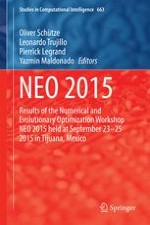This volume comprises a selection of works presented at the Numerical and Evolutionary Optimization (NEO) workshop held in September 2015 in Tijuana, Mexico. The development of powerful search and optimization techniques is of great importance in today’s world that requires researchers and practitioners to tackle a growing number of challenging real-world problems. In particular, there are two well-established and widely known fields that are commonly applied in this area: (i) traditional numerical optimization techniques and (ii) comparatively recent bio-inspired heuristics. Both paradigms have their unique strengths and weaknesses, allowing them to solve some challenging problems while still failing in others.
The goal of the NEO workshop series is to bring together people from these and related fields to discuss, compare and merge their complimentary perspectives in order to develop fast and reliable hybrid methods that maximize the strengths and minimize the weaknesses of the underlying paradigms. Through this effort, we believe that the NEO can promote the development of new techniques that are applicable to a broader class of problems. Moreover, NEO fosters the understanding and adequate treatment of real-world problems particularly in emerging fields that affect us all such as health care, smart cities, big data, among many others. The extended papers the NEO 2015 that comprise this book make a contribution to this goal.
